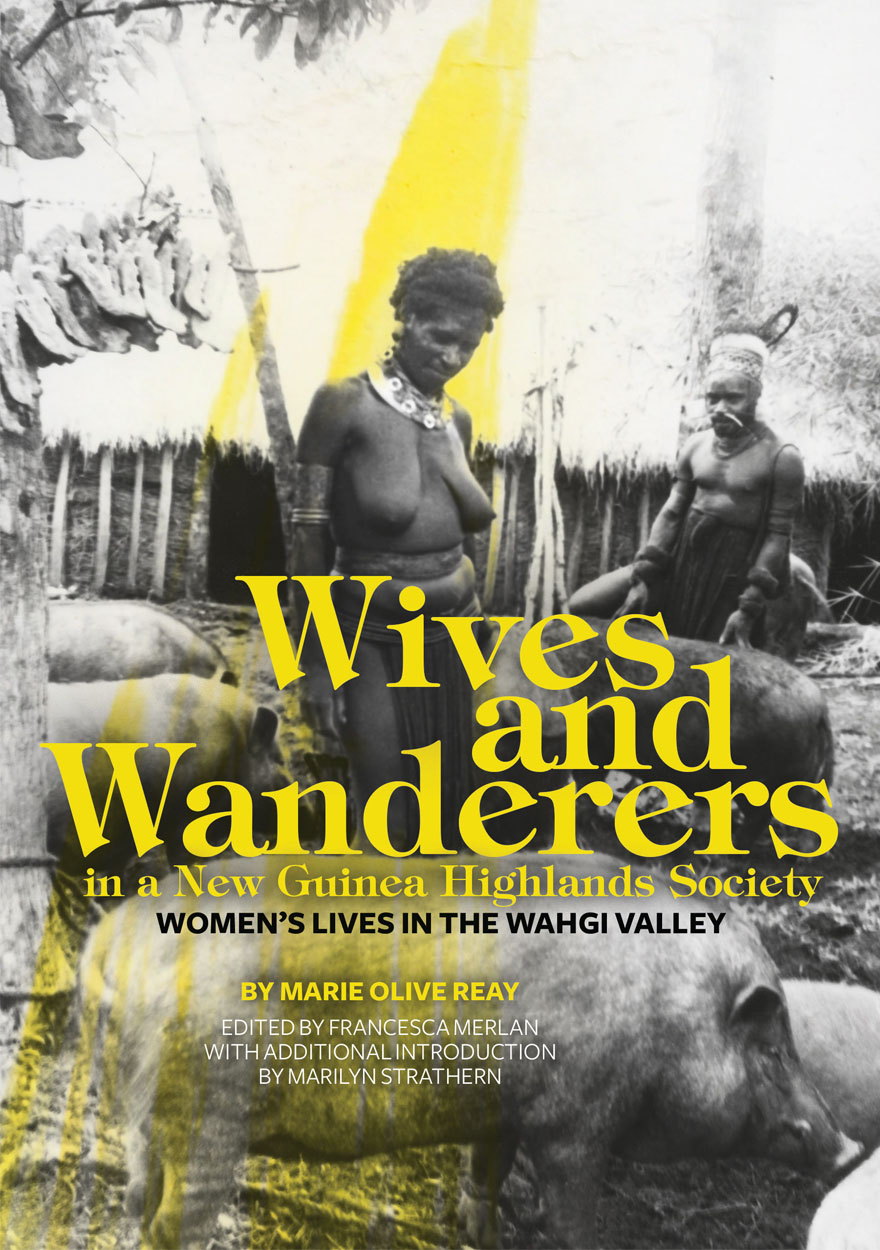Search titles
Displaying results 101 to 110 of 856.

Honouring a Nation »
A History of Australia's Honours System
Authored by: Karen Fox
Publication date: January 2022
The first detailed history of imperial and national honours in Australia, Honouring a Nation tells the story of the honours system’s transformation from instrument of imperial unity to national institution.
From the extension of British honours to colonial Australasia in the nineteenth century, through to Tony Abbott’s revival of knighthoods in the twenty-first, this book explains how the system has worked, traces the arguments of its supporters and critics, and looks both at those who received awards and those who declined them. Honouring a Nation brings to life a long history of debate over honours, including wrangles over State rights, gender imbalances in honours lists, and the emergence and hardening of the Labor/Liberal divide over British awards, illuminating issues that are still part of Australian life—and of the honours system—today. The history of the honours system is equally the history of the nation, revealing who Australians were, what they have become, what they value, and the things that have unified and divided them.
‘National honours are a fraught recognition of merit. They beg many questions: who decides, why some people are recognised, and others ignored. Honours provide a window to the soul of the nation and invite us to consider who we really are and what we value. These are big issues to ponder. Karen Fox provides many of the answers in this timely, lively and important book.’
— Julianne Schultz AM FAHA, Emeritus Professor Media and Culture, Griffith University
‘Give Karen Fox a gong: for distinguished service to Australian culture in recognition of her authoritative yet entertaining account of how a supposedly egalitarian country embraced knighthoods, OAs and other baubles.’
— Richard White, Associate Professor at the University of Sydney and author of Inventing Australia
‘Karen Fox has written an intelligent, incisive and intriguing account of how Australians have acknowledged and elevated their fellow citizens, from the founding of the first colony to the present day … a work packed with insights about the ever-shifting determinants of social hierarchy, individual merit and public esteem … a thoroughly stimulating read.’
— Stuart Ward, Head of the Saxo Institute, University of Copenhagen
‘At last, a definitive account of the Australian honours system, from the First Fleet to 2021. Honours serve as a prism through which to view imperial strategies, federal rivalries and partisan, class-based and gender politics, with many scandals and controversies along the way. Karen Fox has given us a book that is both topical and compelling on evolving national identity and honours as a symbol of exclusion or inclusion.’
— Marian Sawer AO, Emeritus Professor, The Australian National University

Wives and Wanderers in a New Guinea Highlands Society »
Women’s lives in the Wahgi Valley
Authored by: Marie Olive Reay
Publication date: January 2022
Wives and Wanderers in a New Guinea Highlands Society brings to the reader anthropologist Marie Reay’s field research from the 1950s and 1960s on women’s lives in the Wahgi Valley, Central Highlands of Papua New Guinea. Dramatically written, each chapter adds to the main story that Reay wanted to tell, contrasting young girls’ freedom to court and choose partners, with the constraints (and violence) they were to experience as married women.
This volume provides readable ethnographic material for undergraduate courses, in whole or in part. It will be of interest to students and scholars of gender relations, anthropology and feminism, Melanesia and the Pacific. The material in this book, which Reay had written by 1965 but never published, remains startlingly contemporary and relevant.
Marie Olive Reay was a social anthropologist who did research in Australian Indigenous communities and in the Wahgi Valley in the Central Highlands of Papua New Guinea. Employed at The Australian National University from 1959 to 1988 when she retired, Reay passed away in 2004. In 2011 this manuscript was found in her personal papers, reconstructed and edited by Francesca Merlan, augmented here by an additional introduction by eminent anthropologist of the Highlands, and of gender, Marilyn Strathern.
Had this manuscript appeared when Reay apparently completed it in its present form – around 1965 – it would have been the first published ethnography of women’s lives in the Central Highlands of Papua New Guinea. Its retrieval from Reay’s papers, and availability now, adds a new dimension to works on gender relations in Melanesian societies, and to the history of Australian and Pacific anthropology.

A Genealogy of Bamboo Diplomacy »
The Politics of Thai Détente with Russia and China
Authored by: Jittipat Poonkham
Publication date: January 2022
In 1975, M.R. Kurkrit Pramoj met Mao Zedong, marking the eventual establishment of diplomatic relations and a discursive rupture with the previous narrative of Communist powers as an existential threat. This book critically interrogates the birth of bamboo (bending with the wind) diplomacy and the politics of Thai détente with Russia and China in the long 1970s (1968–80).
By 1968, Thailand was encountering discursive anxiety amid the prospect of American retrenchment from the Indo-Pacific region. As such, Thailand developed a new discourse of détente to make sense of the rapidly changing world politics and replace the hegemonic discourse of anticommunism. By doing so, it created a political struggle between the old and new discourses.
Jittipat Poonkham also argues that bamboo diplomacy – previously seen as a classic and continual ‘tradition’ of Thai-style diplomacy – had its origins in Thai détente and has become the metanarrative of Thai diplomacy since then. Based on a genealogical approach and multi‑archival research, this book examines three key episodes of Thai détente: Thanat Khoman (1968–71), M.R. Kukrit Pramoj (1975–76), and General Kriangsak Chomanan (1977–80). This transformation was represented in numerous diplomatic/discursive practices, such as ping‑pong diplomacy, petro‑diplomacy, trade and cultural diplomacy, and normal visits.

Alliances, Nuclear Weapons and Escalation »
Managing Deterrence in the 21st Century
Edited by: Stephan Frühling, Andrew O’Neil
Publication date: December 2021
In an era of great power competition, the role of alliances in managing escalation of conflict has acquired renewed importance. Nuclear weapons remain the ultimate means for deterrence and controlling escalation, and are central to US alliances in Europe and the Indo-Pacific. However, allies themselves need to better prepare for managing escalation in an increasingly challenging geostrategic and technological environment for the US and its allies. While the challenge of great power competition is acute at both ends of Eurasia, adversary threats, geography and the institutional context of US alliances differ. This book brings together leading experts from Europe, Northeast Asia, the United States and Australia to focus on these challenges, identify commonalities and differences across regions, and pinpoint ways to collectively manage nuclear deterrence and potential escalation pathways in America’s 21st century alliances.
‘Nuclear weapons play an important role in deterrence and preventing military conflict between great powers, while also posing an existential threat to humanity. It is vital that we have a nuanced understanding of this important challenge, so that such weapons are never used. This book offers many important perspectives and makes a significant contribution to the overall debate about these powerful weapons.’
— The Hon Julie Bishop, Chancellor, The Australian National University, Former Foreign Minister of Australia
‘This timely book identifies a wide range of challenges US alliances both in the Indo-Pacific and Euro-Atlantic face as they seek to ensure the value of US extended deterrence, particular the US nuclear umbrella, against China and Russia. This unique collection of chapters written by experts in US allies in both regions presents widely varying security perceptions and priorities. To understand such differences is the key to globally strengthen the US alliance systems, which are a significant advantage Washington enjoys over the two competitors.’
— Yukio Satoh, former President of The Japan Institute of International Affairs (JIIA)
‘This is a timely and thoughtful collection of essays that should serve to jumpstart public discussion and debate—the absence of which is widely noted and much bemoaned. Each contributor examines an aspect of the complicated, multifaceted nuclear debate by discussing the range of dilemmas from deterrence to disarmament. The various views set out here are more relevant than ever as Russia, China and the United States flex their nuclear muscles in new and sometimes dangerous ways. This book should be read by anyone interested in the preventing the use of nuclear weapons and understanding complexities of alliances in an increasingly dangerous world.’
— Madelyn Creedon, former Principal Deputy Administrator of the US National Nuclear Security Administration and Assistant Secretary of Defense for Global Strategic Affairs

Lilith: A Feminist History Journal: Number 27 »
Publication date: December 2021
This year’s issue covers a rich variety of topics in feminist history, including: the role of place and space in feminist and lesbian identity-making in 1970s’ Melbourne; a decolonising approach to writing the history of women and children in Alice Springs; the importance of recipe exchange in kinship networks in seventeenth-century Ireland; an examination of the life of twentieth-century poet’s muse Katie Anna Lush; the political theatre employed by the Australian Women’s Movement Against Socialism in the 1940s; the targeting of wine advertisements at Australian women in the 1950s and 1960s; and an exploration of the processes of power within natural history societies in nineteenth-century South Australia. There are also two articles that form a special section on the topic of the female frame, one on the role of uniforms for women workers in the transport industry, and the other comparing archetypes of the infanticidal mother in fin-de-siècle Australian and France.
Download for free
Not available for purchase

Agenda - A Journal of Policy Analysis and Reform: Volume 28, Number 1, 2021 »
Edited by: William Coleman
Publication date: December 2021
Agenda is a refereed, ECONLIT-indexed and RePEc-listed journal of the College of Business and Economics, The Australian National University. Launched in 1994, Agenda provides a forum for debate on public policy, mainly (but not exclusively) in Australia and New Zealand. It deals largely with economic issues but gives space to social and legal policy and also to the moral and philosophical foundations and implications of policy.
Subscribe to the Agenda Alerting service if you wish to be advised on forthcoming or new issues.
Download for free
Not available for purchase

Wampar–English Dictionary »
With an English–Wampar finder list
Authored by: Hans Fischer, Bettina Beer
Publication date: December 2021
This ethnographic dictionary is the result of Hans Fischer’s long-term fieldwork among the Wampar, who occupy the middle Markham Valley in Morobe Province, Papua New Guinea (PNG). Their language, Dzob Wampar, belongs to the Markham family of the Austronesian languages. Today most Wampar speak not only Wampar but also PNG’s lingua franca, Tok Pisin. Six decades of Wampar research has documented the extent and speed of change in the region. Today, mining, migration and the commodification of land are accelerating the pace of change in Wampar communities, resulting in great individual differences in knowledge of the vernacular. This dictionary covers largely forgotten Wampar expressions as well as loanwords from German and Jabêm that have become part of everyday language. Most entries contain example sentences from original Wampar texts. The dictionary is complemented by an overview of ethnographic research among Wampar, a sketch of Wampar grammar, a bibliography and an English-to-Wampar finder list.

Japan at War and Peace »
Shidehara Kijūrō and the Making of Modern Diplomacy
Authored by: Ryuji Hattori
Publication date: December 2021
The question of how to maintain the continuity of diplomacy while developing democracy without military intervention is an old and new issue. The challenge can be described as a dilemma between democracy and diplomatic coherence. This dilemma is not unique to the twenty-first century; it has been a constant challenge to the development of democracy. In non-Western countries, democratisation originated in the nineteenth century and has had many successes and failures. After the Russo-Japanese War, political parties began to take power in Japan.
The best embodiment of diplomacy in Japan’s emerging democracy—the development of parliamentary democracy and mass-based democracy—is Shidehara Kijūrō (1872–1951), who served as foreign minister from 1924 to 1927 and from 1929 to 1931, and was prime minister from 1945 to 1946. As a diplomat from the Ministry of Foreign Affairs, Shidehara had long grappled with the issue of how to ensure diplomatic coherence in modern Japan, which was becoming increasingly democratic. Although Shidehara succeeded to some extent in promoting diplomacy in cooperation with the US and the UK under party politics, the rise of the military after the Manchurian Incident forced him to retire for a period. However, after the Pacific War, Shidehara became prime minister of the US-occupied Japan and attempted to restore cooperative diplomacy under party politics. Shidehara came to the conclusion that the way to achieve both democracy and diplomatic coherence was through nonpartisan diplomacy towards peace.
This book examines the tension between diplomacy and democracy, focusing on Shidehara’s life and exploring modern Japan’s footsteps. Shidehara was undoubtedly one of Japan’s most important diplomatic figures.

East Asia Forum Quarterly: Volume 13, Number 4, 2021 »
Publication date: December 2021
Surrounded by great powers, South Korea has weathered the upheaval of the COVID-19 pandemic in its own unique way. Aspirations for greater autonomy and self-reliance are also driving significant changes to Seoul’s political and security postures amid intensifying regional tensions, and serve as a backdrop as South Koreans elect their next president in early 2022. This East Asia Forum Quarterly examines how South Korea is confronting the big challenges of our time, including public health, green energy, political polarisation, minority rights, denuclearisation on the Korean Peninsula and the global rise of K-pop.
Download for free
Not available for purchase

Made in China Journal: Volume 6, Issue 2, 2021 »
Edited by: Ivan Franceschini, Nicholas Loubere
Publication date: December 2021
Since its announcement in 2013, the Belt and Road Initiative (BRI) has become the main lens through which both observers and stakeholders trace China’s global footprint. Whether cheered on as a new engine of economic development in a fraught and increasingly unequal world or frowned on as a masterplan through which the Chinese authorities are attempting to establish global hegemony, the infrastructure component of the BRI has become such an important frame in discussions of Global China that less tangible aspects that are not in its purview tend to be lost or overlooked. One of these neglected dimensions is China’s long history of international engagement aimed at building economic, political, social, and cultural ties in both the Global North and the Global South. Frequently, we tend to forget how the international presence of Chinese actors we are currently observing did not just happen overnight, but was built on decades of experience of China’s interaction with the rest of the world. In the belief that examining these historical precedents can help us shed light on both the continuities and the discontinuities in the practices of today and that only by digging into the dirt of history can we excavate the roots of the dynamics we are witnessing, this issue is dedicated to the ‘archaeologies of the BRI’.
Download for free
Not available for purchase



